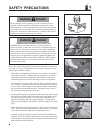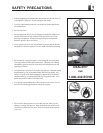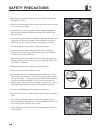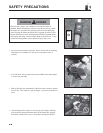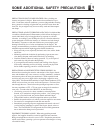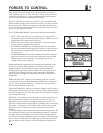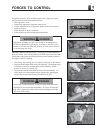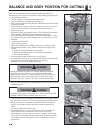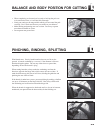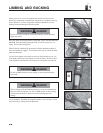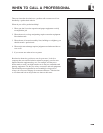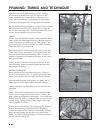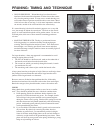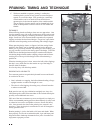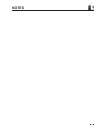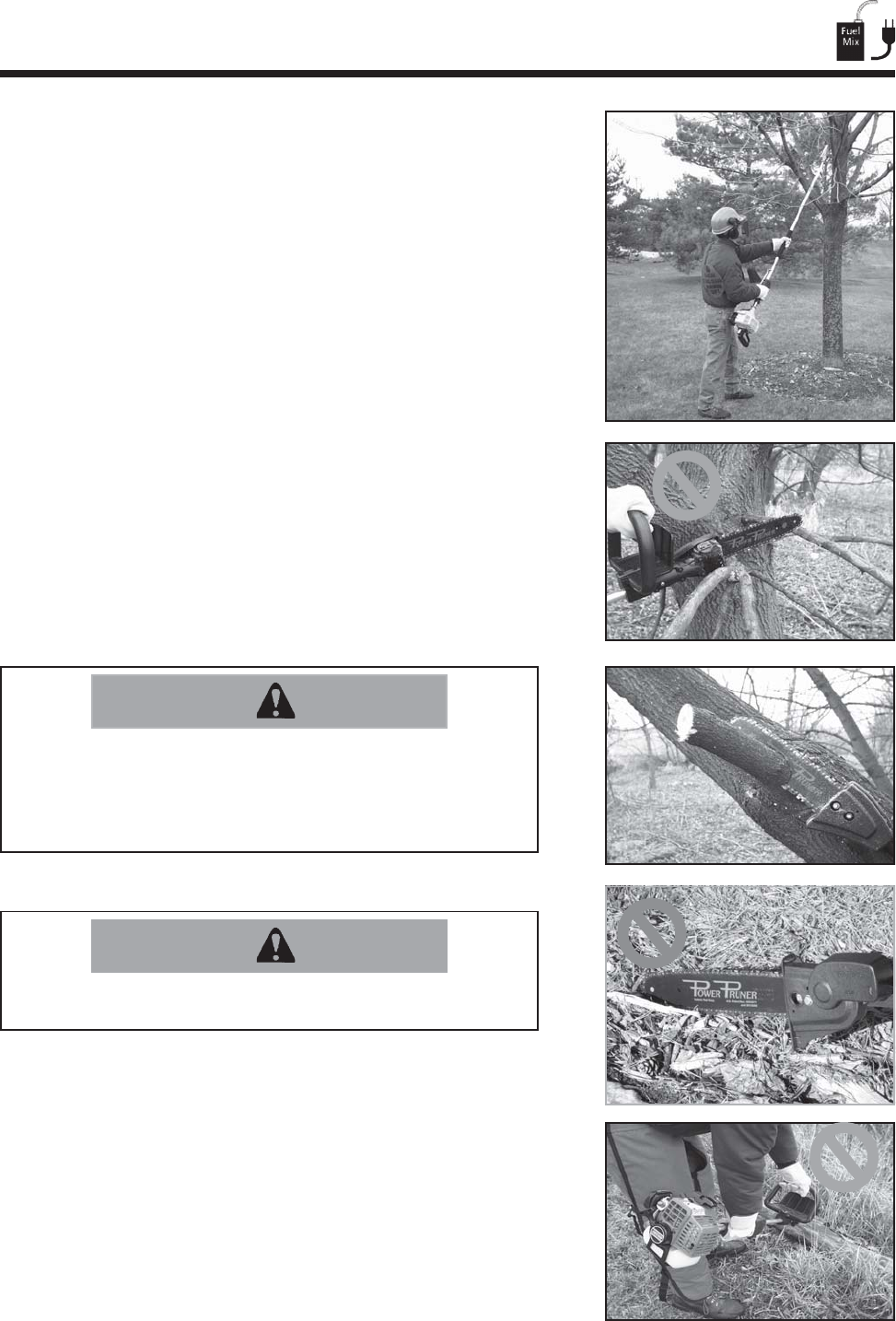
1616
1616
16
Pole saws are designed for light to medium trimming of limbs and
branches up to 20.3 cm (8 in.) in diameter. After starting, pick up the pole
saw and proceed as follows:
• Plan cut carefully. Check direction branch will fall.
• Do not stand directly beneath branch being cut.
• Plan a retreat path from falling branches. Branches may bounce when
striking the ground.
• Stand with your weight on both feet. Adjust your stance so as to be
away from the saw chain or blade and the line the limb will fall.
• When ready to cut:
Hold front cutting guide against branch. This will prevent the branch
from whipping. DO NOT use back and forth sawing action.
• Look out for the branch immediately behind the one being cut. If the
saw chain hits the rear branch damage to the saw chain may occur (or
kickback).
• Accelerate to full throttle.
• Apply cutting pressure.
• Ease cutting pressure when nearing end of cut to maintain control.
• When pruning a limb 10.2cm (4 inches) in diameter or larger cut as
follows:
1. Under cut 1/4 limb diameter near tree trunk.
2. Finish top cut slightly further out on limb from tree trunk.
3. Flush cut stub at trunk.
• Long branches should be removed in several pieces.
• At completion of the cut, let go of the throttle trigger, carefully lift the
pole saw clear, and idle the engine before moving away.
• DO NOT use Pole Saw for felling or bucking.
Moving toward the next place to cut before throttling down and
lifting the saw clear of the cut can cock the saw chain or blade
against the sides of the cut. Always throttle down and let the saw
chain or blade come to a stop and lift the saw clear of the wood
before moving away. Failure to do so may result in serious injury.
• Review your cuts carefully. Sometimes the way the branch is stressed
will endanger you.
If a branch starts to fall, causing your saw to bind, LEAVE THE SAW
AND GET AWAY FAST! or serious injury may occur.
• Do not let the nose of the guide bar come near any solid object while
the saw chain is rotating. Never let the guide bar dip into the ground.
• Keep your body out of the path of a potential kickback. During all
cutting, do not bend toward or otherwise crowd the guide bar or
blade.
• Cut only one piece of wood at a time.
• Do not thrust the nose of the guide bar into a pile of branches or
dense brush where you cannot see if the nose is in the clear.
• When starting a cut, be ready to control any tendency of the guide
bar to skate as it attempts to penetrate the wood. Kickback could be
a secondary reaction if the guide bar nose or blade skates into an
obstruction.
BALANCE AND BODY POSITION FOR CUTTING
WARNING DANGER
WARNING DANGER
WARNING DANGER
WARNING DANGER



